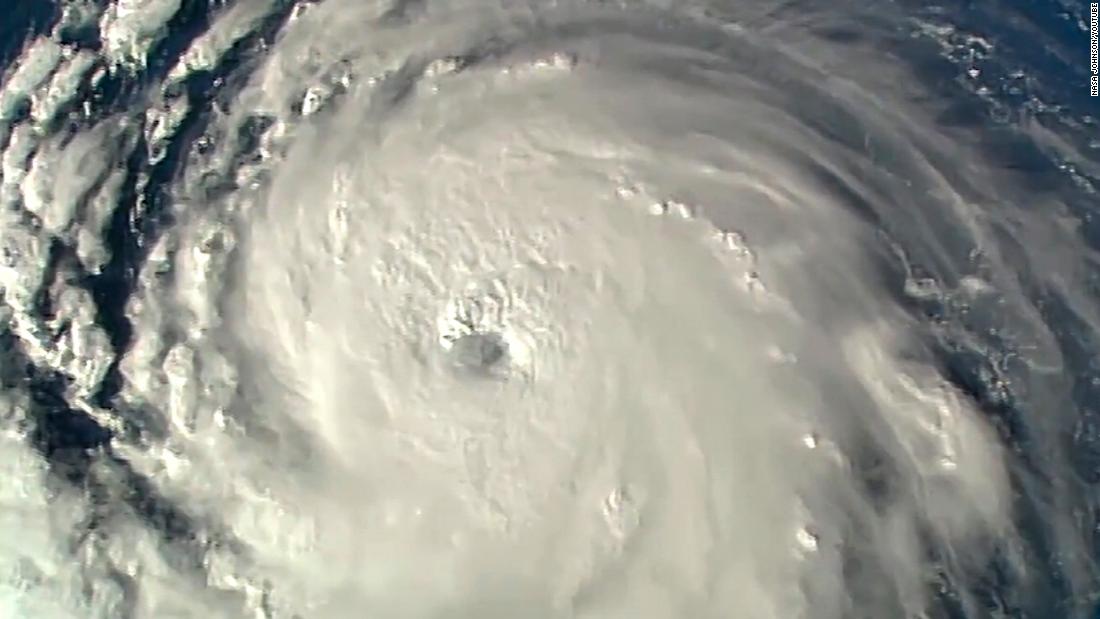World News – Hundreds of thousands of people in Virginia and the Carolinas were ordered to evacuate as Hurricane Florence barreled toward the Southeast as a Category 4 storm early Tuesday.
The most sweeping order came in South Carolina, where Gov. Henry McMaster gave residents along the entire coastline until noon to leave — a mandate potentially impacting as many as a million people.
“We know that this evacuation order is going to be inconvenient for some people,” McMaster said at a news conference on Monday afternoon, “but we do not want to risk one South Carolinian’s life.”
Schools will be closed starting Tuesday in the affected counties and state officials will reverse lanes on four major roads leading to the coast to assist with the evacuation.
“We are not going to gamble with the lives of the people of South Carolina,” McMaster, a Republican, said.
President Donald Trump approved emergency declarations in the Carolinas on Monday night, allowing the Federal Emergency Disaster Agency to assist with disaster relief efforts there. In a joint statement earlier, Virginia’s congressional delegation asked the president to approve Gov. Ralph Northam’s declaration as well.
North and South Carolina are anticipated to bear the brunt of Florence, which the National Hurricane Center said on Monday had strengthened to a Category 3 storm. An hour later, at noon, the agency tweeted that Florence had grown again to a Category 4. As of 5 a.m. ET on Tuesday, Florence was packing maximum sustained winds of near 140 mph. It is expected to gain strength over the next 36 hours.
Hurricane and storm surge watches have been issued for the east coast of the United States, from Edisto Beach, South Carolina northward to the North Carolina-Virginia border, including the Pamlico and Albemarle Sounds. The warnings mean there is a possibility of life-threatening inundation from rising water moving inland from the coastline and hurricane conditions within the watch area.
Florence’s center will move over the southwestern Atlantic Ocean between Bermuda and the Bahamas on Tuesday and Wednesday, according to the National Hurricane Center. It’s is expected to approach the coast of the Carolinas on Thursday.
In North Carolina, evacuations were already underway: Dare County officials issued a mandatory evacuation on Monday for Hatteras Island in the Outer Banks, and ordered more evacuations for other areas of the county beginning Tuesday morning, including the University of North Carolina Wilmington.
Northam also issued mandatory evacuations to begin Tuesday morning for the most low-lying, flood prone areas of the state — the Eastern Shore and a section of coast identified by officials as “Zone A.”
While the storm could weaken some before making landfall, forecasters expect it could still be a Category 3 or 4 when it does.
Gov. Roy Cooper of North Carolina warned residents to take the threat of the storm seriously.
“The forecast places North Carolina in the bull’s-eye of Hurricane Florence, and the storm is rapidly getting stronger,” he said. “When weather forecasters tell us ‘life-threatening,’ we know that it is serious.”
North Carolina should brace for three dangers from Florence, Cooper said: coastal ocean surges, strong winds and flooding.
“All parts of the state could be affected by the storm,” Cooper said at a news conference Monday morning, warning that power outages could last for “awhile.”
Early Tuesday, Florence was 410 miles south of Bermuda and about 975 miles east-southeast of Cape Fear, North Carolina, moving west at 15 mph.
On Sunday, South Carolina’s state emergency management agency tweeted it was “preparing for the possibility of a large-scale disaster.”
Those in Florence’s path weren’t wasting time on Monday. Shelves in some grocery stores in Raleigh, North Carolina, were already bare, and residents were filling up their gas tanks, reported NBC affiliate WRAL in Raleigh.
“Just in case I might have to make a quick getaway, I have a full tank of gas and I’m ready,” Raleigh resident Tony Johnson told WRAL.
Nearly 200 miles to the south, at an Ace Hardware in the coastal town of Calabash, North Carolina, manager Tom Roberts told The Associated Press he’d sold 150 gas cans in two hours on Monday — along with plywood, rope, sand bags and other necessities.
“I’ve been doing this since 1983,” Roberts said. “This is the craziest one.”
In Mullins, South Carolina, recent transplant Dorthy Lee snapped a photo of empty shelves at a WalMart and posted it on Facebook with a caption: “Feeling a little anxious about this hurricane!!!”
Lee, who moved from New York a month ago and plans to ride out the storm in her new home, said Florence would be her first hurricane.
“Just praying everyone is OK,” she said in an interview.
In Carolina Beach, just south of Wilmington, Landon Baggett also said he’d never before experienced a hurricane. A native of Chapel Hill, in the state’s interior, Baggett said he was a student and had only been on the coast a few weeks.
“I’m pretty worried,” he said. “They said it’s going to be pretty dangerous and we’re going to have to evacuate.”
“The danger is coming,” he added.
Teresa Lynn Taylor hadn’t yet decided what to do. Taylor, 52, owns the five-decades-old Silver Hill Grill in Holden Beach, and hasn’t evacuated since Hurricane Diana struck the Atlantic Coast in 1984.
“When it’s your whole livelihood, it’s kind of hard to just walk away,” she said.
Trump said the federal government was “closely monitoring and ready to assist” those in Florence’s path.
“The Storms in the Atlantic are very dangerous. We encourage anyone in the path of these storms to prepare themselves and to heed the warnings of State and Local officials,” he tweeted.
A Trump campaign rally scheduled for Friday in Jackson, Miss., was canceled because of the storm.
by Elizabeth Chuck, Tim Stelloh and Kerry Sanders, NBCNews.com


